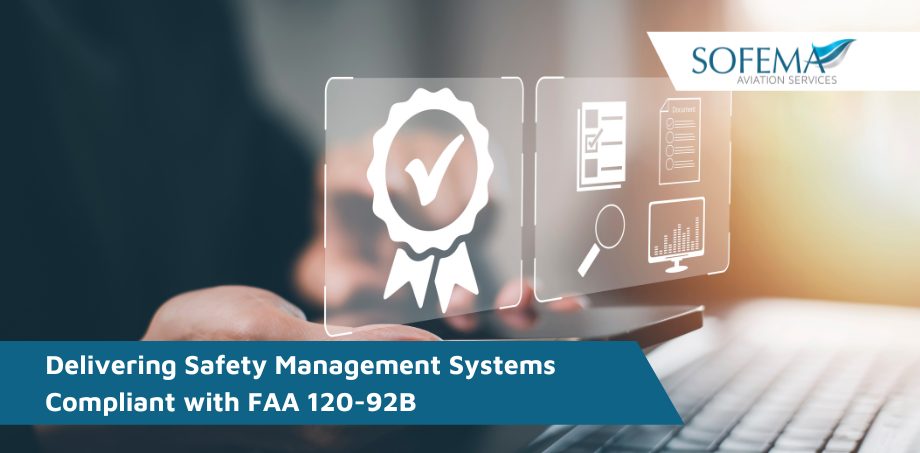FAA 120-92B compliant Safety Management Systems – Process review by Sofema Aviation Services (SAS) www.sassofia.com
Safety Management System – Introduction
An SMS is an organization-wide comprehensive and preventive approach to managing safety.
- An SMS includes
o A safety policy,
o Formal methods for identifying hazards and mitigating risk,
o Promotion of a positive safety culture.
o An SMS also provides assurance of the overall safety performance of your organization.
- An SMS is intended to be designed and developed by your own people and should be integrated into your existing operations and business decision making processes.
o The SMS will assist your organization’s leadership, management teams, and employees in making effective and informed safety decisions.
The Foundation of an SMS
- Safety Culture and Safety Management. (Key to safety performance)
- Interdependence – Safety culture and SMS are interdependent.
o Management’s constant attention, commitment, and visible leadership are essential.
- Cultures are the product of the values and actions of the organization’s leadership as well as the results of organizational learning (time, practice and repetition, the appropriate attitude, a cohesive approach, and constant coaching from involved mentors.)
- Management Framework – facilitates decision making and shapes the environment.
o A safety culture matures as safety management skills are learned and practiced and become second nature across the entire organization.
- The following have been found to be characteristics of organizations that consistently achieve safe results:
o Open Reporting: The organization should encourage disclosure of error without fear of reprisal, yet it should also demand accountability on the part of employees and management alike.
o Just Culture: The organization should engage in identification of systemic errors, implement preventative corrective action, and exhibit intolerance of undesirable behaviors such as recklessness or willful disregard for established procedures. This is often referred to as a “just culture.”
o Personnel Involvement: Involvement of line personnel and all levels of management in functions dealing with aviation safety, including the accountable executive, is critical to effective safety management throughout an organization.
o Use of Information: Effective use of all safety information assures informed management decision making.
o Commitment to Risk Reduction: (Direct management involvement in identifying hazards and managing risk).
o Vigilance: To ensure effectiveness of risk controls and awareness of emerging hazards.
o Flexibility: Willingness to commit resources to making changes necessary to reduce risk.
o Learning: learns from its own failures and from those of allied and similar businesses.
– Uses acquired data to feed analysis processes.
o Management Involvement.
– Management commitment to and involvement in safe operation performing their daily work.
Note: SMS processes do not have to be expensive or sophisticated.
- Active personal involvement of operational leaders is essential.
- Managers to “own” the processes in which risk resides.
Next Steps
Follow this link to our Library to find & Download related support documents.
Sofema Aviation Services www.sassofia.com & Sofemaonline www.sofemaonline.com offer Safety Management System Training as Classroom, Webinar or Online. For additional details, please visit our websites or email team@sassofia.com
Tags:
aviation, aviation safety, EASA, FAA, Safety Culture, SMS, Hazard, Aviation Safety Management System, Aviation SMS, Aviation Safety Management, SAS blogs




